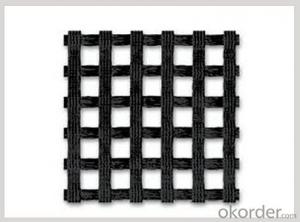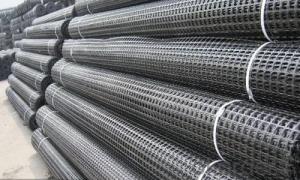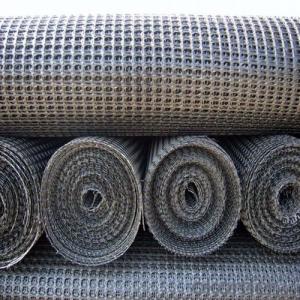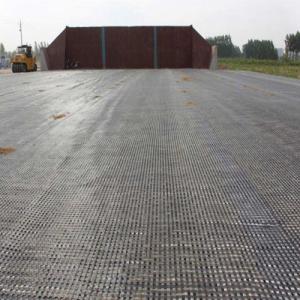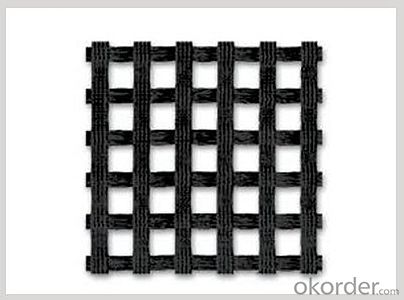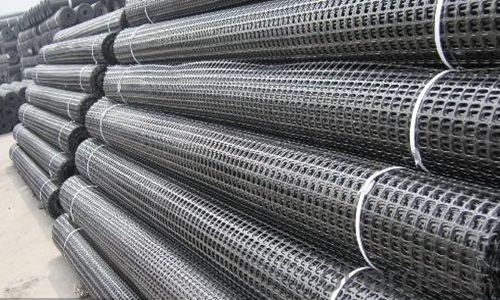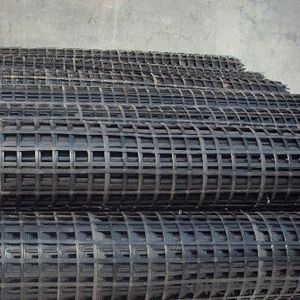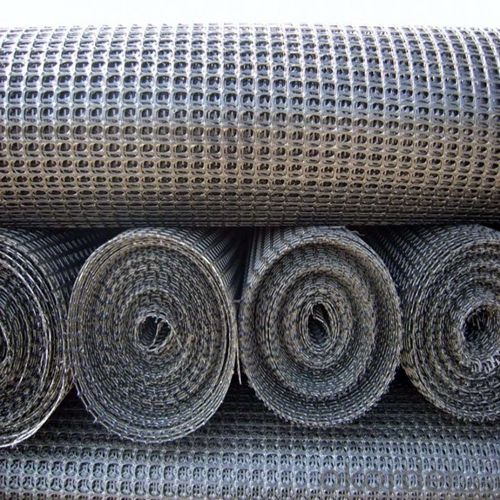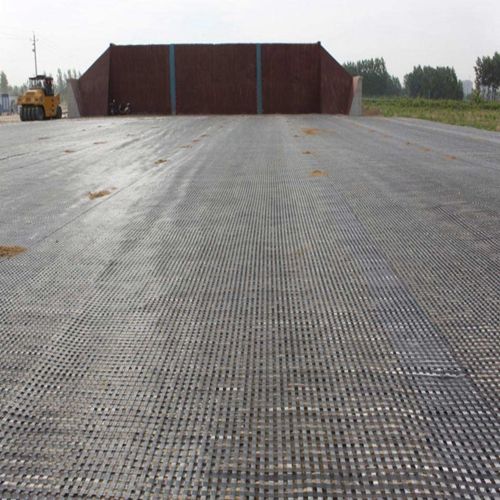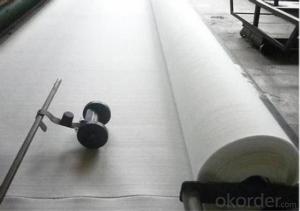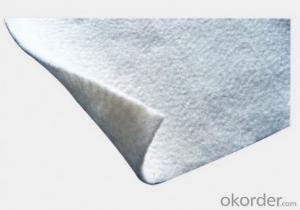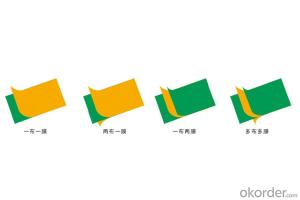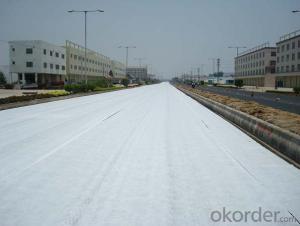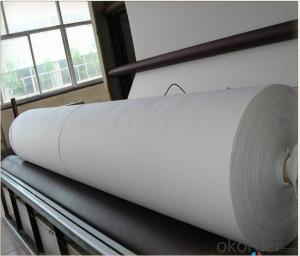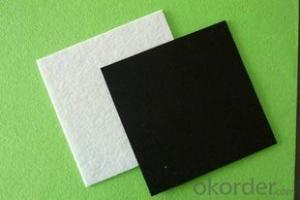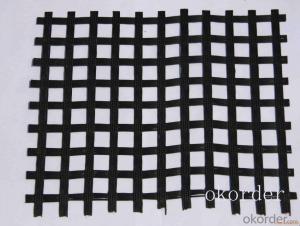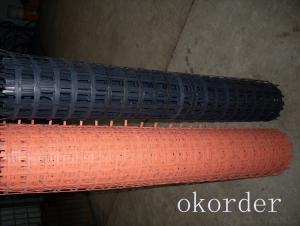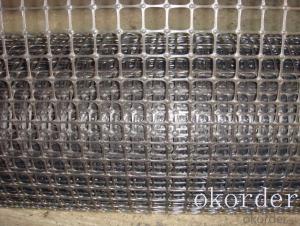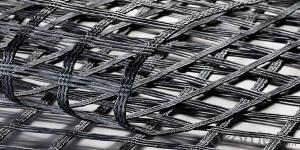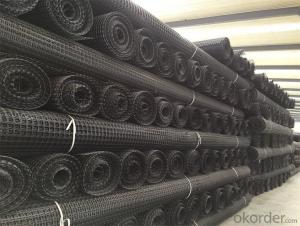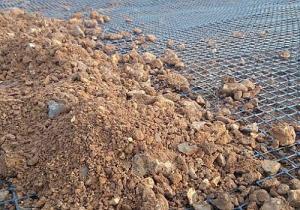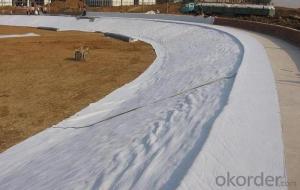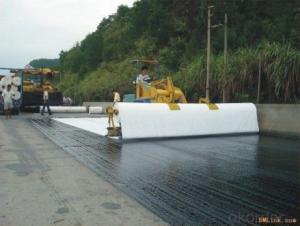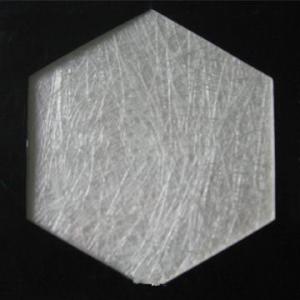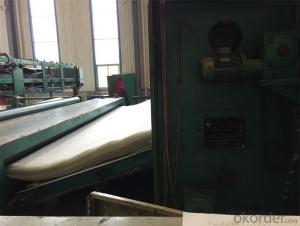Geotextile Fabric UK - Fiberglass Geogrid Polyethylene for Civil Engineering Construction
- Loading Port:
- China main port
- Payment Terms:
- TT OR LC
- Min Order Qty:
- 1000 m²
- Supply Capability:
- 1000000 m²/month
OKorder Service Pledge
OKorder Financial Service
You Might Also Like
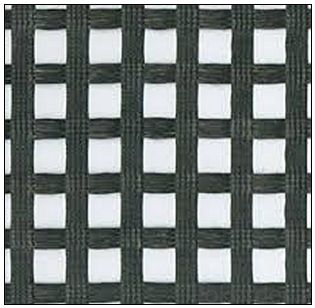
Porducts Description
Type:
Geogrids
Place of Origin:
Shandong, China (Mainland)
Brand Name:
CMAX
Model Number:
20KN/M--50KN/M
Material:
Plastic
width:
1-6m
Certificate:
CE,ISO
Fiberglass geogrid is a kind of planar mesh material using alkali-free fiberglass yarn as base body and then coated with high quality modified asphalt. It is warp knitted with oriental structure which gives full play of yarn strength and improves its mechanical property to make the product high tensile, tearing and creep-resistant. Moreover, the composite property of coating with asphalt makes full protection of the fiberglass matrix and greatly improves its wear and shear resistance. All the advantageous functions make the product have a good performance in pavement strengthening, track cracking and solving difficulties of strengthening the bituminous pavement.
Our Service
Quality assurance
1.On a regular basis or as per your request,we entrust national testing agencies to conduct quality inspections
2. Strictly in accordance with the ISO9001-2008 international quality system standard,we monitor and manage the whole process throughout production,quality testing,and measurement to ensure product quality
3. For quality-related construction delay or substandard construction(except for damage or losses due to customer’s responsibility or irresistible natural disasters),we have refunding,replacement,and repair services.We will respond to customers’ feedbacks on quality issues within 24 hours.
Packaging & Shipping
Packing: PLASTIC FILM INSIDE, AND WOVEN BAG OUTSIDE
Shipping: About 15 days after receipt the deposit
FAQ:
Q: What kind of payments does jenor support?
A: T/T, L/C, Cash are accepted.
Q: Do you charge for the samples?
A: Accordeing to our company policy, the samples are free, we only charge the freight fee. And we will return the freight fee during the next order.
Q: Can you produce according to customers' design?
A: Sure, we are professional manufacturer, OEM and ODM are both welcome.
Q: Do you have other products?
A: Yes, please check the pictures:
- Q: How do geotextiles help with reinforcement of geogrid wall systems?
- Geotextiles help with the reinforcement of geogrid wall systems by acting as a separation and filtration layer. They prevent the mixing of different soil layers, which can compromise the stability of the wall system. Additionally, geotextiles help to distribute the loads evenly across the geogrids, enhancing their strength and overall performance.
- Q: How are geotextiles affected by UV exposure?
- Geotextiles are affected by UV exposure as prolonged exposure to sunlight can cause degradation and deterioration of their materials. UV rays can weaken the fibers of geotextiles, reducing their strength and overall performance. To combat this, geotextiles are often treated with UV stabilizers or coatings to increase their resistance to UV radiation and extend their lifespan.
- Q: What are the advantages of using geotextiles in wetland restoration projects?
- There are several advantages of using geotextiles in wetland restoration projects. Firstly, geotextiles provide effective erosion control by stabilizing the soil and preventing it from washing away during heavy rainfall or flooding. This helps in maintaining the wetland's structure and preventing further degradation. Secondly, geotextiles act as a barrier, preventing the migration of harmful substances such as pollutants or excess nutrients from adjacent areas into the wetland, thus protecting its ecological integrity. Additionally, geotextiles can enhance vegetation growth by retaining moisture in the soil, promoting root development, and preventing weed growth. This ultimately contributes to the overall success of wetland restoration efforts.
- Q: Will geotextiles generally use where?
- Geotextile applications (1) Reinforcement in backfill for retaining walls, or panels for anchoring retaining walls. Building a parcel or retaining bridge. (2) to reinforce the flexible road surface, repair the cracks on the road, to prevent the road reflection cracks. (3) to increase the stability of gravel slope and reinforced soil to prevent soil erosion and low temperature soil damage. (4) the separation between the road ballast and the roadbed, or the isolation between the roadbed and the soft foundation. (5) artificial fill, rock or material field and the isolation layer of the foundation, the separation between different frozen soil layer. Anti-filtration and reinforcement. (6) ash filter or tailings dam early upstream of the dam surface filter, retaining wall backfill drainage system filter layer. (7) drainage around the tube or gravel drainage ditch around the filter layer. (8) Water conservancy works in the wells, relief wells or diagonal pipe filter layer. (9) Isolation of geotextiles between roads, airports, railways and artificial rockfill and foundations. (10) internal or horizontal drainage of the dam, buried in the soil to dissipate the gap water pressure. (11) Drainage of the bottom of the impervious geomembrane or the lower part of the concrete face in the earth dam or embankment. (12) to exclude the surrounding water seepage of the tunnel, to reduce the external pressure of the lining and the surrounding water infiltration. (13) Drainage of Foundation of Artificial Filling Ground. (14) roads (including temporary roads) railways, embankments, earth dams, airports, sports and other projects to strengthen the weak foundation.
- Q: Polyester short wire geotextile 300 grams of water ministry indicators
- Polyester short wire geotextile 300 grams of water ministry indicators and GB indicators are the same. Can be implemented in accordance with GB / T-2008 standards. 300g polyester short wire geotextile per unit area quality deviation required ± 7%. 300g polyester short wire geotextile thickness ≥ 2.4mm. 300g polyester short wire geotextile width deviation of ± 0.5%. 300g polyester short wire geotextile breaking strength ≥ 9.5KN / m. 300g polyester short wire geotextile elongation at 25% to 100%. 300g polyester short wire geotextile CBR burst strength ≥ 1.5KN. 300g polyester short wire geotextile equivalent pore size 0.07mm ~ 0.2mm. 300g polyester short wire geotextile vertical permeability coefficient (1.0 ~ 9.9) * (10 negative square ~ 10 negative three times). 300g polyester short wire geotextile tear strength ≥ 0.24KN.
- Q: Planting roofing geotextile lap way
- Lap 10 cm, sewing with sewing machine, I specializing in the production of roofing with geotextile, drainage board and other products, wish smooth
- Q: Are geotextiles resistant to fire?
- Yes, geotextiles can be made resistant to fire through the use of specific materials and treatments.
- Q: Thank you, great gods
- Polyester short wire, polyester filament, polypropylene geotextile, filament woven geotextile, and so on. I professional production geotextile geomembrane and other geotechnical materials, a professional construction of the welding team, wish smooth
- Q: Are geotextiles resistant to hydrostatic pressure?
- Yes, geotextiles are generally resistant to hydrostatic pressure. They are designed to have high tensile strength and durability, which allows them to withstand the pressure exerted by liquids or water.
- Q: Can geotextiles be used in waste containment projects?
- Yes, geotextiles can be used in waste containment projects. They are commonly employed as liners or covers in landfill sites, helping to prevent the migration of contaminants and providing stability to the waste. Geotextiles can also be used to reinforce the soil in waste containment structures, enhancing their strength and durability.
Send your message to us
Geotextile Fabric UK - Fiberglass Geogrid Polyethylene for Civil Engineering Construction
- Loading Port:
- China main port
- Payment Terms:
- TT OR LC
- Min Order Qty:
- 1000 m²
- Supply Capability:
- 1000000 m²/month
OKorder Service Pledge
OKorder Financial Service
Similar products
Hot products
Hot Searches
Related keywords
